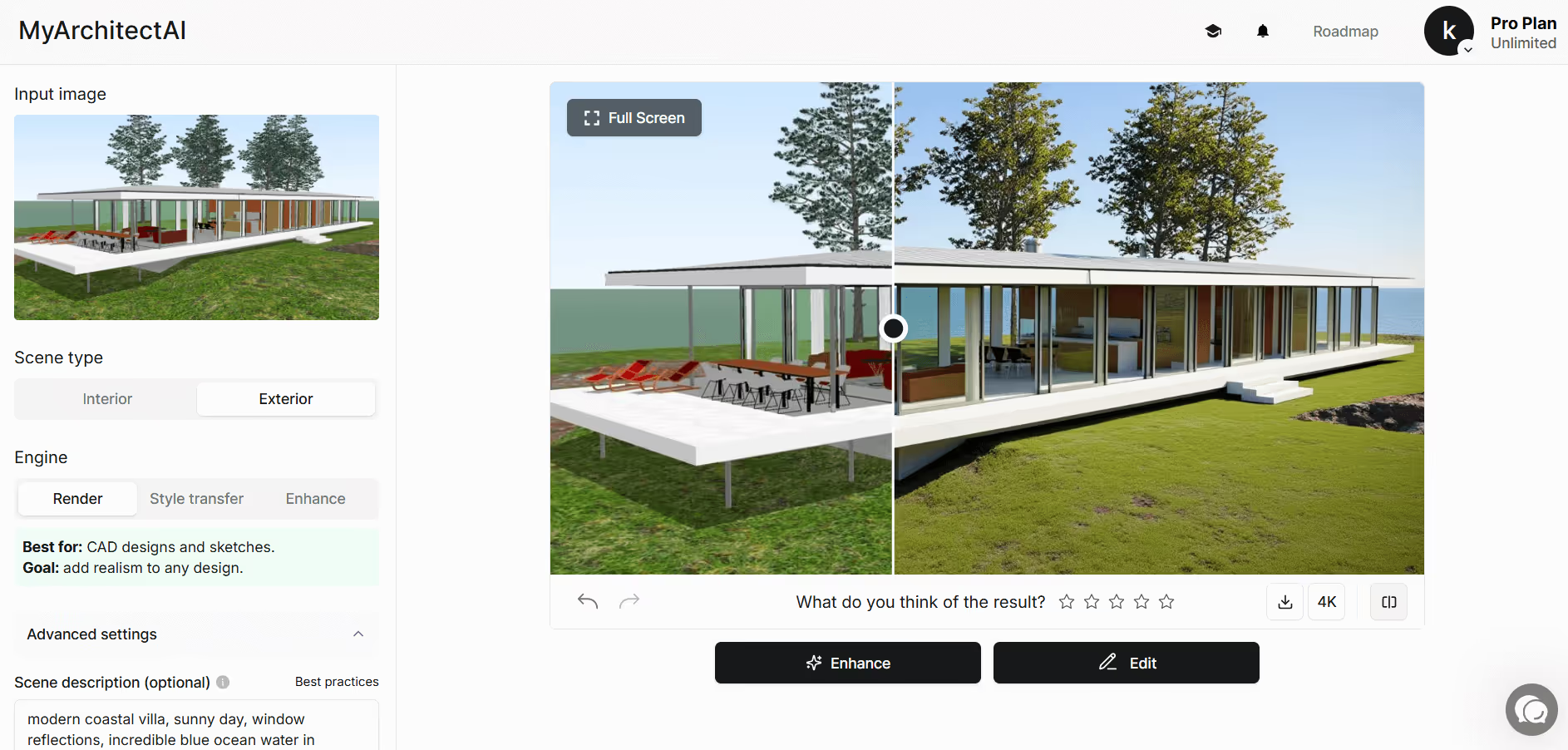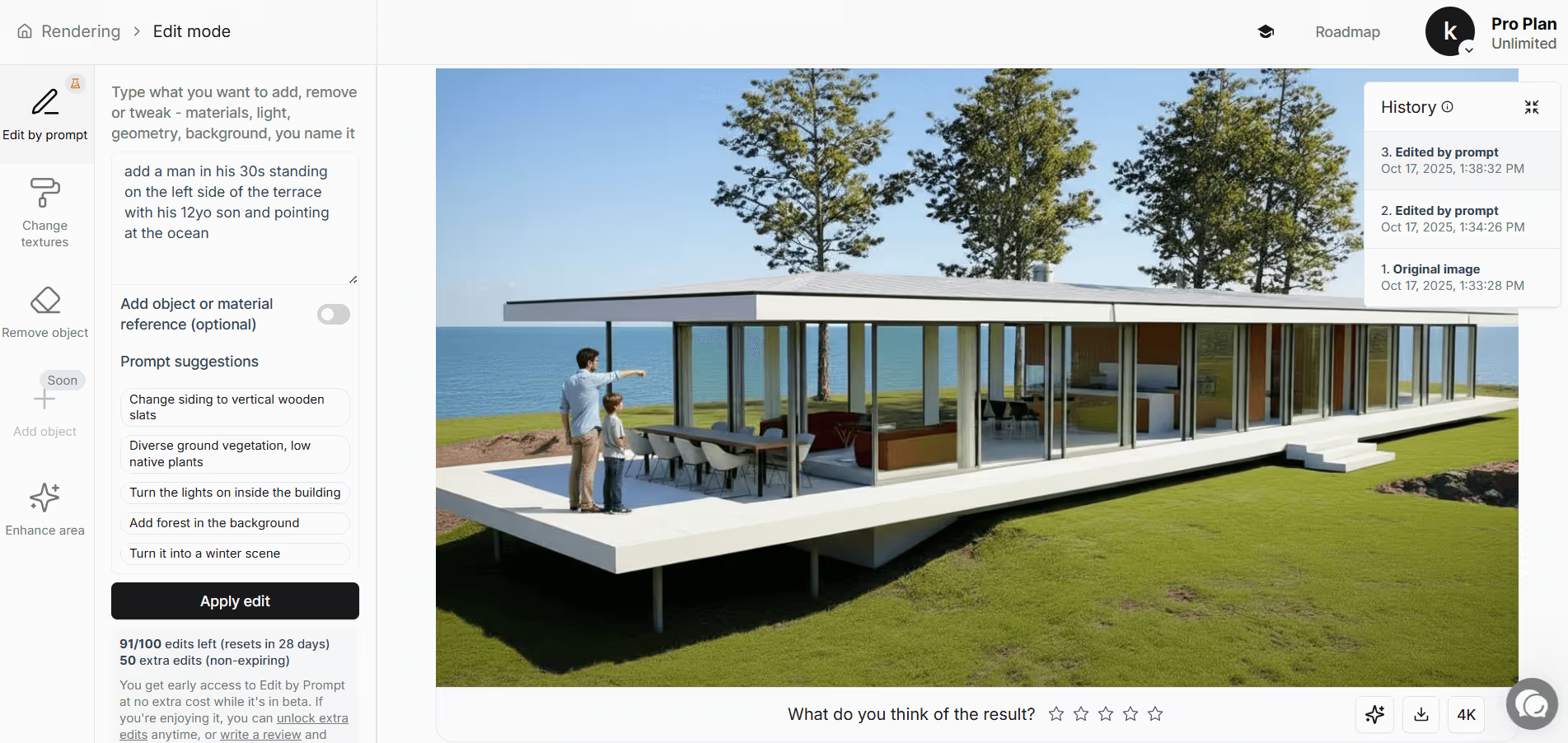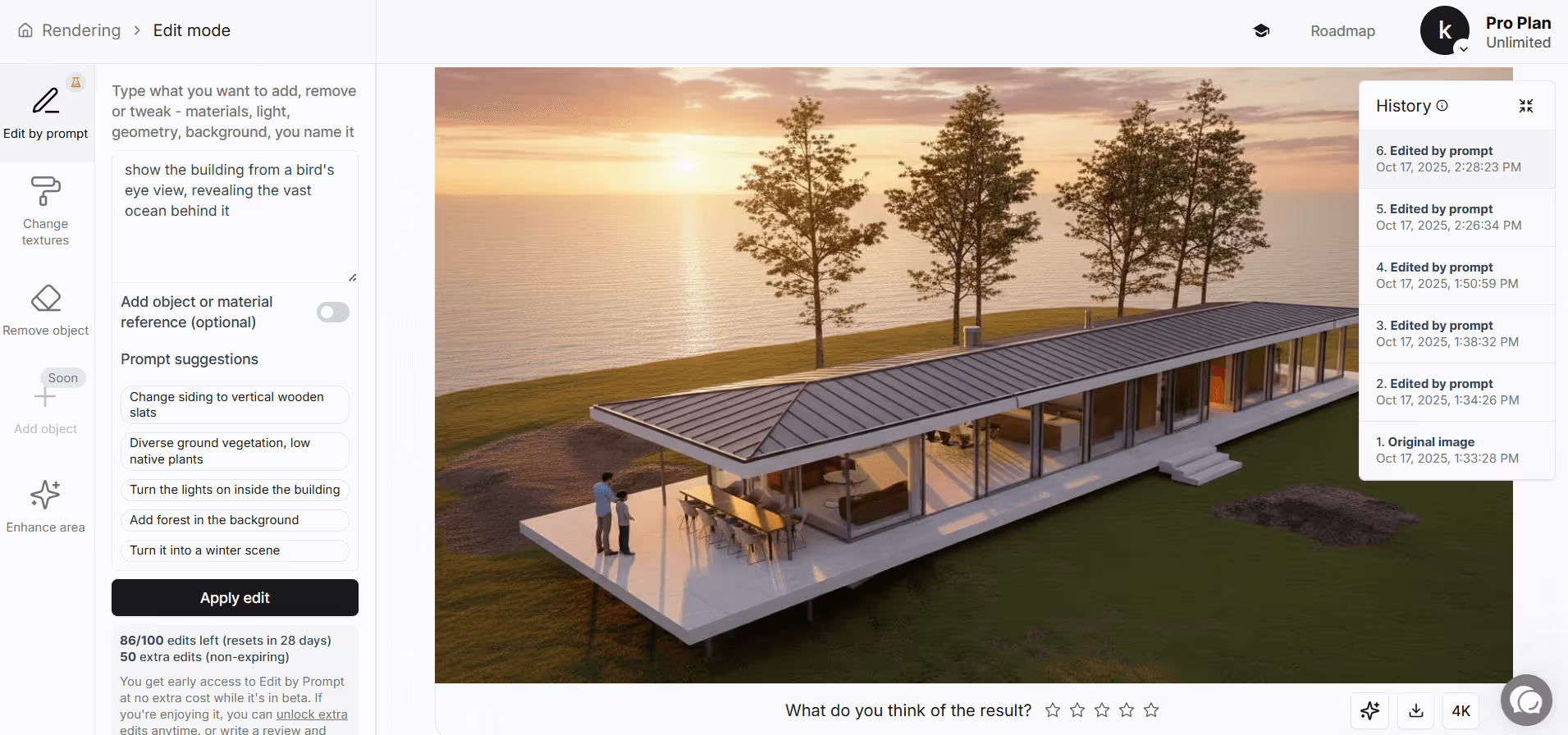Google’s newest AI model, Nano Banana (also known as Gemini 2.5 Flash Image), redefines how architects and interior designers handle image generation and editing.
Instead of jumping back into SketchUp, Revit, or Photoshop, you can now make instant changes to your renderings just by describing the edits with words.
Want to test different cladding materials, add and remove objects, or change the mood? Nano Banana will do it in seconds.
You can access Nano Banana in several ways, depending on your workflow:
In this guide, we’ll focus on the last method, since it’s the easiest and most efficient way for architects and designers to make the most out of Nano Banana’s potential.
I began by turning the SketchUp model below using MyArchitectAI's AI rendering engine (it took 15 seconds):

Next, I entered the editing mode ("edit" button below the render) to access Nano Banana ("Edit by Prompt" in MyArchitectAI).
Now, let’s take a look at what editing operations Nano Banana can do for you.
Forget Photoshop. With Nano Banana, just describe the object you want removed from your render using words.
You don't even need to make any selections on the image - it's smart enough to understand your text instructions.
Example prompt: "remove the red sunbeds from the terrace"

With Nano Banana, you can easily add people, furniture, plants, or environmental context to your scene. Use text prompts for quick results or upload reference images for more accurate control.
In the example below, I just described the change with words.
Example prompt: "add a man in his 30s standing on the left side of the terrace with his 12yo son and pointing at the ocean"

Nano Banana is perfect for testing materials. And not just based on text description. You can also upload an image of the new material for greater control.
Make sure to upload a material swatch that’s properly scaled and oriented for best results.
Example prompt: "replace the roof material using the one from the attached image"

Nano Banana also allows you to quickly experiment with different lighting conditions, weather settings, or seasons.
Example prompt: "turn it into a sunset scene, add a few clouds to the sky"

One of Nano Banana’s standout features is its ability to change the camera angle while keeping the scene perfectly consistent.
In the example below, notice how the main subject remains unchanged despite moving the camera to a bird's eye level.
Example prompt: "show the building from a bird's eye view, revealing the vast ocean behind it"

And if you want to take a step back, you can get Nano Banana to turn your render into an isometric model.
Example prompt: "turn the building in the photo into an isometric 3D model on a square tile. remove all the landscape"
.avif)
Similar operations work seamlessly in interior renders. You can experiment with different materials, add new home decor, people, or change lighting.
Here are a few other examples:
Nano Banana completely changes how architects and interior designers approach render editing. The workflow is quicker, simpler, and far more fluid than traditional methods. Instead of jumping between tools to fix materials, polish visuals, or respond to client feedback, you can handle it all with a single prompt.
This results in spending less time clicking through menus and more time actually designing.
And when you use Nano Banana together with MyArchitectAI, you get an end-to-end workflow powered by AI: generate renders, refine them, and make instant edits—all in one place.